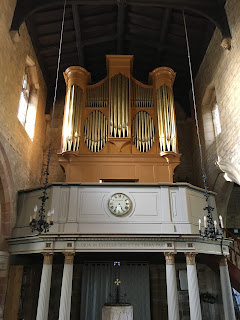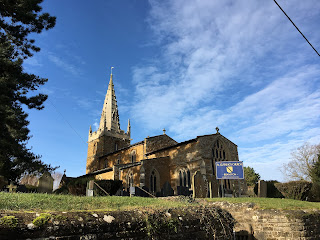I SAY A LITTLE PRAYER
In March 1997, looking up at the necklace of lights in the hill settlements above the road from Ben Gurion airport, and then again, as our Israeli tour guide reminisced and enthused about his outstanding part in the 1967 ‘liberation’ of Jerusalem, I remember prophesying that I’d never return to the Holy Land as a pilgrim. For once I was right. Along with many others I’ll never again visit a country where right-wing extremist politicians, emboldened by Netanyahu, brazenly talk about replicating the slaughter of the ‘Amalekites’, and where Christians also are now sometimes harassed near the holy sites. Israeli nationalists are making it ‘their’ place alone, and not our collective protection within a proud, sovereign nation, who own a sound moral compass where all the ‘people of the book’ are honoured and welcome. Perhaps it was never thus, but for a while we bought into the dream. Didn’t you?
The Church Times has caught onto this, and in its most recent edition, suggests other venues for pilgrimage. The Meteora (been there as a teenager, and very inspiring the monasteries were), Anatolia, Rome (yes, tick, Pope Benedict on a noisy Sunday morning), even eastern Denmark are all touted as alternatives to Galilee and Jerusalem, before the feature declines into more routine Sunday Supplement holiday mode. OK, it was fascinating to visit Ithaca once upon a time, giving a new gloss to my study of the Odyssey, but was it in any sense a pilgrimage? Where do historical interest and spiritual devotion overlap, interact, begin and end? And anyway, what should we think about any foreign tourism in 2024?
Watching again Waldemar Januscak’s 2005 film about the Sistine Chapel, I was reminded how very fortunate we were as a family to visit some of the greatest holy sites of our faith. Those travels brought events and stories vividly to life. Sometimes it was just all too much to take in. The Sistine Chapel (if it falls into a pilgrimage category at all) was definitely a case in point. Too much visual information overwhelming the brain, even if as in our case, there were only thirty or forty other people in the place with us. Jerusalem, actually, was much the same, both times we visited. But…there are still lots of other places to see. I’ve never followed in the footsteps of St. Paul. Or been to Ethiopia. Or Iona. Or Lourdes. Santiago was wonderful, weird and inforgettable. Nowadays, international travel is less appealing; there’s too much hassle. I feel a parallel to the bigger picture of international development. How can I deny younger people the experiences I’ve been privileged to have, however dubious the eco-values of jet pollution and cultural interference?
So today, on my pilgrim’s way to the great space of Lincoln Cathedral, the villages at the south of the Vale of Belvoir will do just fine: Branston, Knipton and Harston; all postcard-pretty in the sunshine of February’s first day.
St.
Guthlac’s in Branston is pleasing to the eye, out and in. There are tables set for
the worshippers, café
style, and I eat a sarni at one of them, beside a dead wasp. But if you wanted
to hold a dance, the tables could be cleared away and the non-participants
could sit out on the pews which are set onto two dais on the north and south
sides. The church’s glory is the 1794 Hugh Russell organ, now restored, on
which I guess you could make a very merry and loud noise indeed. I’ve been to a St. Guthlac’s before – in
Passenham near Milton Keynes, but they’re not two a penny. Guthlac was a hermit
whose cell was on the then island of Crowland, near Peterborough. Many of the great and good came to seek his
advice. He promised Aethelbald kingship in Mercia, and when the prophecy came
true, the king built a monastery which Guthlac sadly didn’t live to see. Guthlac’s sister Pega is also revered as a
saint. There’s just one church dedicated to her, which I encountered at
Peakirk, on the edge of the fens, towards the end of my Great Big Diocesan
Walk:
( https://walkingtopeterborough.blosgspot.com )
 |
| Branston's mighty organ |
They’re
making good the road in Knipton, with many men and much machinery. The lanes
are closed for miles around, and the local traffic is hugely confused. To get there from Branston, I have to pass
through Belvoir estate land. A shooting party is out. In the field to my west,
towards the reservoir, men with flags are hollering to persuade the stupid
birds to come and be shot. I pass a gate
which tells me to keep out, because pest control is constantly taking place. I
presume this to be a euphemism or its opposite. Isn’t this where they rear the
partridge and pheasant chicks, without advertising the fact? Game has reappeared on the Waitrose shelves,
and personally I’m happy about that. I’m
only suspicious of the shooting industry because I think of it as
indiscriminate and unthinking fun for the toffs, but that’s probably a false
stereotype projected by ‘period’ TV drama.
Saxon sarcophagus lid inset in Knipton porch
The church of All Saints Knipton looks rather woebegone and unloved for such an apparently prosperous village. It’s clearly in redundancy, but in a place where many of the houses are clearly owned by the Belvoir estate, and the plaques on the wall proclaim that past churchwardens were from the Duke of Rutland’s family this seems a real shame. If the roads can be made better – and above average care was being taken with that civic amenity - and the cricket club poshed up, why is All Saints on its way out? How will this be remedied, or is its future to be a crumbling reproof to the inhabitants of Knipton? Answer: (in part) The National Churches Trust.
The road up to Harston is steep, and the church of St. Michael and all Angels perches on the escarpment, appropriately looking down on loveliness or a fallen world, depending on your angelic mood. Two benches are provided for sitting and pondering. The interior is austere and nineteenth century; in fact, the whole place is a rebuild. The day and the view have me hurrying outside again.
In each of the three churches I read the Collect for the day out loud:
God our creator,
who in the beginning
commanded the light to
shine out of darkness:
we pray that the light
of the glorious gospel of Christ
may dispel the darkness
of ignorance and unbelief.
Shine into the hearts
of all your people,
and reveal the
knowledge of your glory
in the face of Jesus
Christ your Son, our Lord,
who is alive and reigns
with you,
in the unity of the
Holy Spirit,
one God, now and for ever.
Amen : in Branston, Knipton, Harston, Jerusalem, the West Bank, Gaza, Kyiv, Moscow and all the world round.
Croxton Kerrial – Branston – Knipton – Harston – Croxton Kerrial
12.5 km. 3.7 hours. 8 deg. C . Clear at first, with a little gradual accumulation of cloud. A light breeze.
‘I say a little prayer’: written
by the great ‘Bacharach and David’ team, and recorded initially by Dionne
Warwick. Warwick’s super-smooth vocal
glides over piano-driven Latin rhythms, and then the song is ‘made’ by the
dropped beats in the chorus after the words ‘for ever’ giving an impression of breathlessness. Apparently, Bacharach felt the released
version was just a little quick, and indeed, when we recorded a ‘soundalike’ a
few years ago, it did feel uncomfortable to play at that tempo. The public didn’t agree; Warwick’s record
sold in bucketloads, and few songs can match the way she conveys the passion,
even desperation, of young love. If the band on the day had played the song
more slowly even by a couple of beats per minute, it would just have taken away
the fire and replaced it with mere sentimentality.






Comments
Post a Comment